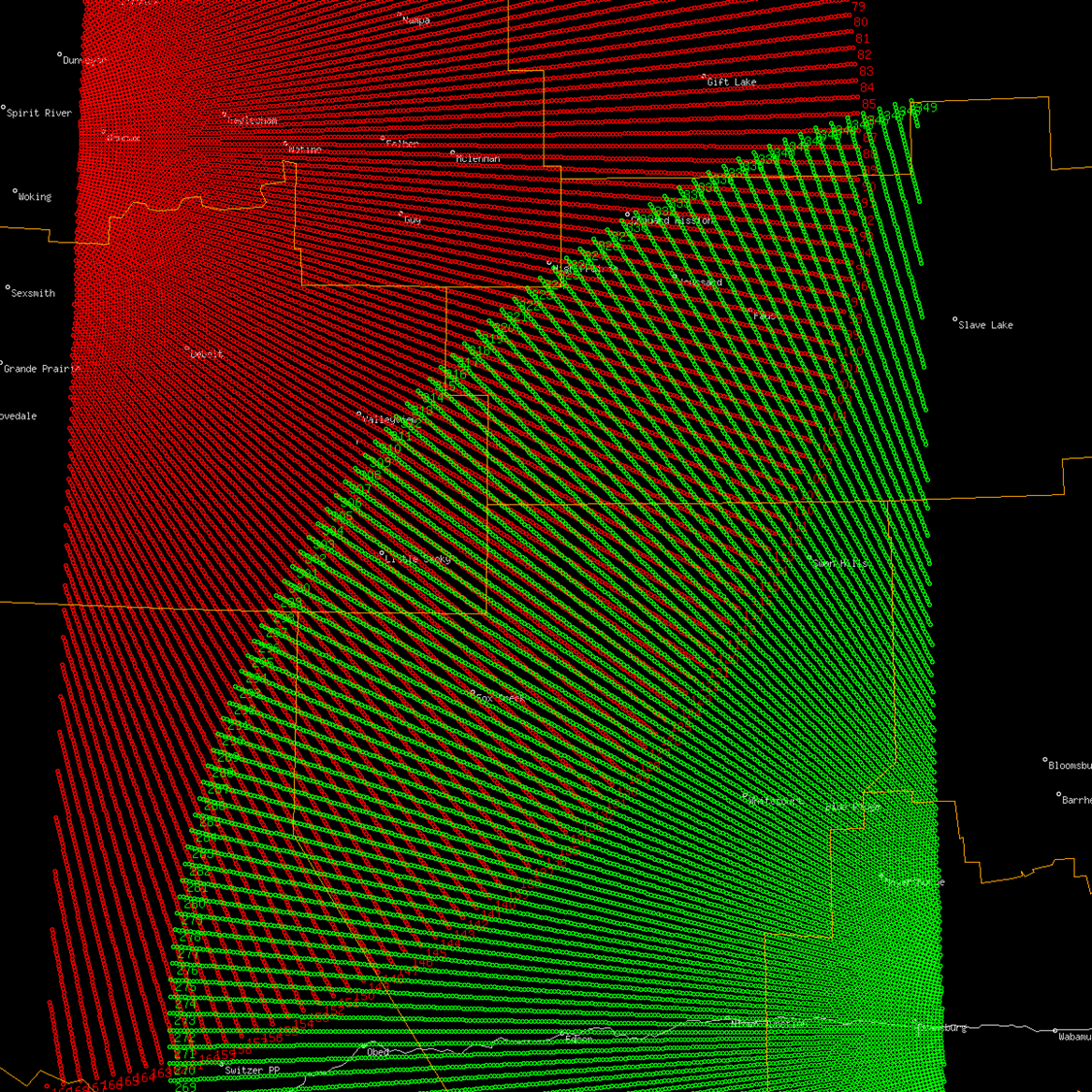Differences Between Radars

 All radars are not equal
All radars are not equal
¡3 different kinds of hardware in Prairie and Northern Region (PNR)
-
Strathmore (XSM), Bethune (XBE), Woodlands (XWL): 98A radars, 0.65° beamwidths
-
Carvel (WHK), Jimmy Lake (WHN), Radisson (XRA), Foxwarren (XFW): 98E radars, 1.1° beamwidths
- Spirit River (WWW): 98E radar, 1.5° beamwidth
These kinds of differences
are likely present in radars across the country. The Wikipedia article
below gives an overview of types of radars that comprise the Canadian
network.
It is difficult to adjust two different kinds of radars so that they assign a common echo with exactly same Z. Looking at long-term precipitation accumulations, such as the image below, shows qualitative differences, but it would be preferable to have quantitative differences.

14-day rainfall accumulation up to Aug 15, 2009 using original radar data.
n
Compare the overlap regions
of two radars using Doviak & Zrnic relation for radar range as a
function of elevation angle θ, atmospheric refractivity n, and height h.

Plot of 0.3° sweep radar bins over northwestern Alberta
The goal is to save dBZ
values for overlapping bins from each radar for each volume scan, then
generate time-integrated differences between radars, that will be used
to adjust a radar's output reflectivity, and then generate products.

Base level dBZ reflectivity adjustment applied
to each radar to bring it to the average base level reflectivity difference
between radars for the 28-day period July 19 – Aug 15.

14-day rainfall accumulation up to Aug 15 using reflectivity adjustments
References
Doviak, R. J. and D.S.
Zrnic , 1993: Doppler Radar and Weather Observations, 2nd
Edition. Academic Press, 562 pp.
Doviak, R. J. and D.